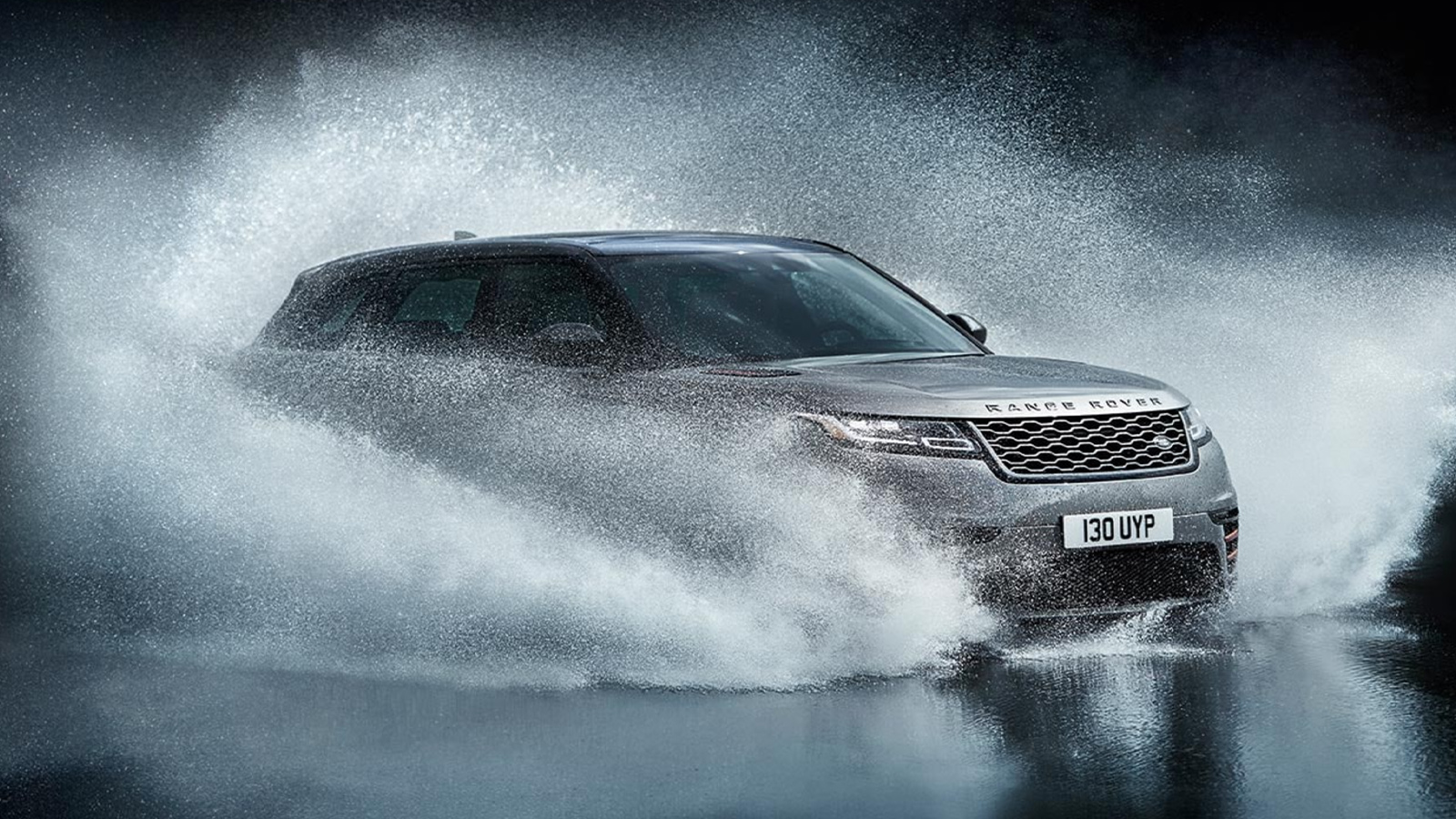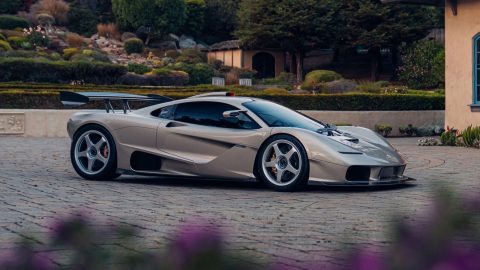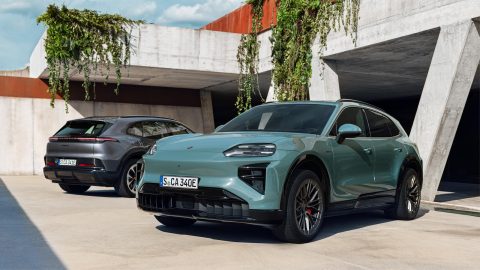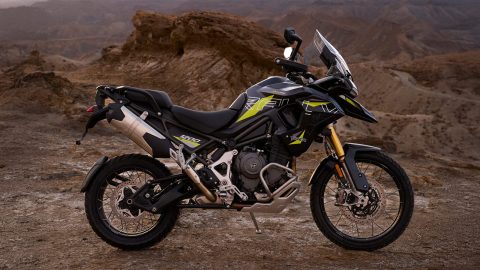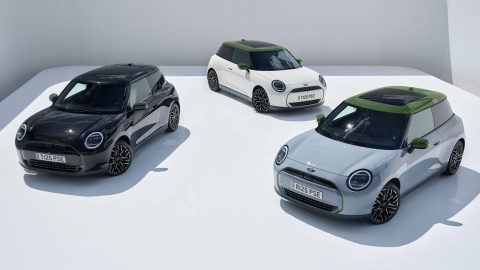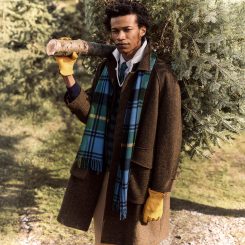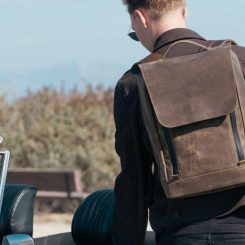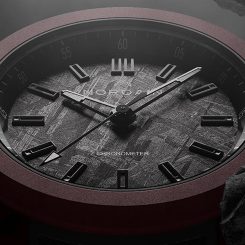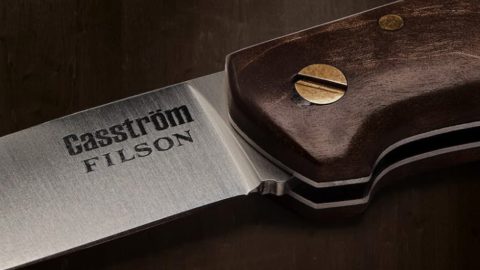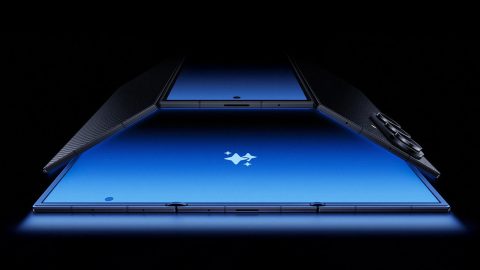If you were a contestant on Family Feud and Steve Harvey asked you to name a vehicle built to travel off-road the top three answers on the board would probably be Jeep, Toyota Land Cruiser, and Land Rover. But that wasn’t always the case. For years, America had a different interpretation of the British-born Land Rover SUV than the rest of the world. Like a bad satellite delay, America did not understand Land Rover until much later. It took ignoring the experts, good timing, and designing a Land Rover specifically for Americans so that Yanks could see what the world already knew for decades. Land Rovers are built for adventure.
Born in the aftermath of World War II, the first Land Rover Series I debuted in 1948. It would take 40 years before Land Rover could make a big enough splash to get America’s attention. Today, parking a new Land Rover SUV in the driveway is a status symbol. It speaks of refined luxury and go-anywhere performance that’s been tested and developed in the wildest terrain Mother Nature has to offer. So why did it take so long for America to accept the Land Rover brand? And once they did, how did Land Rover come to be a staple of luxury and versatility in a modern market filled with 4×4 and AWD (all-wheel drive) options?
Inspired by Jeep to Replace the Horse
In the dawn of post-war Europe, the Rover Company was struggling to keep its doors open. Raw materials were in short supply as the world readjusted itself to the new pecking order. Leftover military equipment found itself being reassigned to civilian duty to rebuild Europe. This included vehicles like the Ford/Willys Overland Jeep. Chief Designer for the Rover Company was Maurice Wilks who owned a surplus Willys Jeep for use on his family farm. He loved the practicality of the Jeep being able to do all the work a horse would typically do.
With parts virtually unavailable, what would Maurice do when it came time to replace one of them? The answer was obvious, Britain needed to build its own 4×4.
However, it soon dawned on Wilks that his trusty Jeep would eventually break down. With parts virtually unavailable, what would Maurice do when it came time to replace one of them? The answer was obvious, Britain needed to build its own 4×4. Maurice’s brother Spencer Wilks also worked at Rover as its managing director. Together they started working on plans for what would become the Series 1 Land Rover. At the time, the vehicle was promoted as a 4WD (four-wheel drive) Rover car so it was just referred to as ‘The Land Rover’.
Obtaining the raw materials to build the Land Rover required the Rover Company to convince the British government that this new vehicle could be a valuable export for the country. Designing the Land Rover meant using whatever was available and streamlining the building process. To provide the necessary 4WD, Rover built its own transfer case. The engine was a pre-war 1.4-liter inline four-cylinder that was toughened-up to a 1.6-liter producing 52-horsepower to better handle the demands of powering all four wheels. Steel was in short supply so most of the truck’s bodywork was made out of aluminum. Its distinctive flat boxy exterior design came from trying to keep production costs down by using body panels that were as straight as possible. From concept to finish, the Series I Land Rover prototype was finished in one year. The Land Rover was shown to the world at the 1948 Amsterdam Motor Show.
The Series I Land Rover looked like a Jeep. However, where the Jeep was designed to storm the beaches, the Series I Land Rover was purpose-built to haul families across the farm. With an 80-inch wheelbase, the Land Rover offered big versatility in a compact design. One of the first ads from Land Rover described the Series I as a “cheeky” vehicle with “and unlimited capacity for hard work”, meant to do anything a horse can do at three times the speed. The plucky Brit off-roader became a hit and demand for the Series I soon surpassed production.
By 1952, Land Rover introduced a 2.0-liter engine option, and variants of the Series I started being released. Customers could buy a Land Rover pickup truck variant or a luxury-spec Tickford Bodied, and later on a station wagon variant.
The Series I stayed in production until 1958 before being replaced by the Series II Land Rover. This model was a more polished example than the original. It offered a wider track to improve off-road stability. Some of the body’s sharp corners were curved to reduce the Land Rover’s boxy appearance and now included side skirts. The windshield was enlarged to improve visibility. A 2.0-liter diesel engine option was introduced and the standard gasoline engine was now a 2.25-liter four-cylinder producing 70-hp and 124 lb.-ft of torque. By this time the Land Rover has become popular not only with farmers but also with militaries around the world.
Born to Explore
As Land Rovers gained in popularity, it did not take long for owners to start using them for more than work. They started using 4WD for recreation, thus creating a new subculture of the automotive community. It’s off-road capabilities allowed drivers to go where no other vehicle had gone before. The popular claim is that a Land Rover was the first vehicle seen by 1/3 of the world’s population. When one thinks of an early Land Rover it is hard not to imagine it on an African safari or exploring a muddy jungle in Southeast Asia. Transcontinental grand tours as the crow flies became a Land Rover specialty.
If US farmers needed to replace their workhorse with a 4×4 vehicle all they had to do was walk into the nearest “Big Three” dealership and buy a pickup truck.
However, while the world was falling in love with Series I, II & III Land Rover America was indifferent. The simple answer to this is because Americans did not need to buy an imported Land Rover. If US farmers needed to replace their workhorse with a 4×4 vehicle all they had to do was walk into the nearest “Big Three” dealership and buy a pickup truck.
Bringing the Range Rover to America
By the late 1960s the SUV as we would come to know it was starting to take shape. Land Rover wanted to build an off-roader that could also be used in the city as a regular commuter. By 1969, the Range Rover was introduced. This new three-door SUV offered full-time four-wheel drive powered by a 130-hp 3.5-liter Rover V8 engine. It became a hit for the same reasons SUVs would suddenly dominate the roads in America. It offers the practicality and strength of a pickup truck with the interior space of a family sedan and the adventurous capability of a 4×4.
By the 1980s the Range Rover was dominating the world market, except for the US. Land Rover executives wanted to break into the American market, but Land Rover’s researchers stated that Americans would not pay more for a luxury off-road SUV. Thankfully, the heads of Land Rover decided that the research was better used as toilet paper and started building a Range Rover aimed at Americans. This would be a luxury-spec variant introducing SUVs buyers to options that have never before been offered.
In 1987, Land Rover introduced the Range Rover in America with leather interiors, a sunroof, premium audio system, V8 power, and buttons to control everything. The timing was dead on as the SUV explosion was primed and ready to be set off. Today, a Range Rover is seen in parallel with a Mercedes-Benz G-Wagon wearing chrome instead of mud on their wheels.
A New Decade of Land Rover
Now, in 2021, Land Rover continues to deliver the need for luxury in adventure. Land Rover introduced a limited-edition Range Rover called the Fifty Edition in honor of the vehicle’s 50th anniversary. Only 1,970 examples will be available and offer unique exterior design features with 50th anniversary badging. Inside, the Fifty Edition Range Rover will be based on Land Rover’s premium Autobiography trim level.
The Range Rover has a starting price of over $90k which puts it out of reach for most SUV buyers. However, Land Rover also offers the dynamic performing Range Rover Sport, stylish Range Rover Velar, and compact Range Rover Evoque at much lower starting prices to attract a larger market. However, the Range Rover is Land Rover’s flagship vehicle – the one wearing the crown. Engine options on a 2021 Range Rover start with a mild-hybrid, turbocharged, inline six cylinder engine to a V6 turbocharged diesel and ending with a top-of-the-line supercharged 5.0-liter 557-hp V8. At its highest spec, the 2021 Land Rover Range Rover can hit zero to 60 in 5.1-seconds and reach a limited top speed of 155 mph.
In 2019, Land Rover introduced an all-new Defender. The last time the Land Rover Defender got a new update was 1983 which didn’t end production until 2016. The new 2020 Land Rover Defender is offered as the 90 and 110 with a starting price under $50K for the Defender 90. The standard engine is a 2.0-liter twin-turbocharged four-cylinder engine producing 296-hp and 295 lb.-ft of torque. Top-of-the-line Defender X starts at $80k offering a 3.0-liter inline six-cylinder engine producing 395-hp and 406 lb.-ft of torque. Every Land Rover Defender comes standard with all-wheel drive, locking differentials, and an eight-speed automatic transmission.
The new 2021 Land Rover Defender is now a unibody instead of a body-on-frame construction. It also ditches the solid axle in favor of independent suspension. Upgrades include air ride suspension that can raise the Defender’s ride height while off-road. Its ground clearance stands at 11.5-inches and swims through 35.4-inches of water. According to Car and Driver, these figures exceed the Jeep Wrangler’s ground clearance and water wading stats.
An SUV with High Society Curb Appeal
The once rugged post-war workhorse substitute has evolved into a world traveler with high society curb appeal. The modern Land Rover, and the Jeeps that helped inspire it, offer customers more than locking differentials and 4WD. It’s a lifestyle that some never truly indulge in, like pickup trucks that never leave the city or sports cars with low miles. But that is okay because owning a Land Rover does not require owning a pair of mud boots and an electric winch. Sometimes the greatest luxury is simply having the option. Like the option to travel off-road while riding in the comfort of a well-equipped leather interior. Or the option to daydream of the rugged terrain you can explore while sitting in rush hour traffic.

